What Is Buildings:
Buildings are structures created by humans for various purposes. They serve as places for living, working, learning, and more. From homes to offices, schools, and factories, buildings are integral to our daily lives. They come in diverse styles and designs, reflecting the functionality and aesthetics desired by individuals and communities. Buildings contribute to the identity of cities and societies, providing spaces for shelter, work, recreation, and the pursuit of cultural and religious activities. In essence, buildings are the physical manifestations of human ingenuity, meeting our needs and shaping the environments in which we live.
Residential Buildings:
Residential buildings are structures designed and constructed to provide living spaces for individuals or families. These buildings serve as homes, offering shelter, comfort, and a private space for people to live, sleep, and carry out their daily activities. Residential buildings come in various forms and sizes, catering to different housing needs and preferences. Here are some common types of residential buildings:
Single-Family Homes:
- Detached houses designed to accommodate one family. They often have private yards and are standalone structures.
Duplexes:
- Buildings divided into two separate living units, each with its own entrance. Duplexes are popular in urban areas and can house two separate families or households.
Apartments/Condominiums:
- Multi-unit buildings that consist of individual living spaces, often stacked vertically. Apartments are usually rented, while condominiums are individually owned units within the building.
Townhouses:
- Also known as row houses or terraced houses, townhouses are typically multi-story buildings with individual units that share walls. They offer a balance between single-family homes and apartments.
Mansions:
- Large, luxurious residences often associated with wealth and grandeur. Mansions are characterized by their expansive size, architectural opulence, and extensive grounds.
Commercial Buildings:
Commercial buildings are structures that are designed and used for business and economic activities. These buildings serve various purposes related to commerce, trade, and the exchange of goods and services. Commercial buildings are typically characterized by their design to accommodate the specific needs of businesses and often house offices, retail spaces, or a combination of both. Here are some common types of commercial buildings:
Office Buildings:
- These are structures specifically designed to house offices and administrative spaces. They can range from small office buildings to large corporate skyscrapers.
Retail Buildings:
- Retail buildings are designed to accommodate businesses that sell goods or services directly to consumers. They include stores, shops, malls, and shopping centers.
Shopping Malls:
- Malls are large commercial complexes that house multiple retail stores, restaurants, and entertainment facilities under one roof.
Hotels:
- Commercial buildings that provide lodging, accommodations, and various services for travelers. Hotels can range from small boutique establishments to large luxury resorts.
Restaurants:
- Buildings specifically designed to host dining establishments. They vary in size and style, ranging from small cafes to upscale restaurants.
Entertainment Venues:
- Commercial buildings that host entertainment events, such as theaters, cinemas, concert halls, and other performance spaces.
Skyscrapers:
- Tall, multi-story buildings often used for a combination of office spaces, retail, and sometimes residential purposes. Skyscrapers are iconic features of urban landscapes.
Industrial Buildings:
- While industrial buildings primarily serve manufacturing and production purposes, they can also fall under the commercial category if they house offices or retail spaces.
Mixed-Use Developments:
- These are buildings or complexes that combine multiple functions, such as a mix of residential, commercial, and recreational spaces within a single development.
Educational Buildings:
Educational buildings refer to structures specifically designed and constructed to facilitate learning, teaching, and academic activities. These buildings house educational institutions such as schools, colleges, universities, and other learning centers. The design and layout of educational buildings are crucial in creating conducive environments for intellectual growth, collaboration, and the overall well-being of students and educators.
Key features of educational buildings include:
- Classrooms: Spaces where teachers instruct students in various subjects. Classrooms are typically equipped with desks, chairs, a chalkboard or whiteboard, and other instructional tools.
- Lecture Halls and Auditoriums: Larger spaces designed to accommodate larger groups of students for lectures, presentations, and academic events.
- Libraries: Buildings or dedicated areas within educational institutions that house collections of books, journals, and other educational resources. Libraries often include reading areas and study spaces.
- Laboratories: Specialized rooms equipped with scientific equipment and tools for hands-on experimentation and research in subjects such as physics, chemistry, biology, and computer science.
- Administrative Offices: Spaces for administrative staff, including offices for principals, deans, registrars, and other administrative personnel responsible for the management of the educational institution.
- Common Areas: Spaces like cafeterias, lounges, and outdoor areas where students can gather, socialize, and relax between classes.
- Recreational Facilities: Some educational buildings may include sports facilities, gyms, or outdoor spaces for physical education and recreational activities.
- Auditoriums and Theaters: Spaces designed for performances, plays, presentations, and other cultural events.
Cultural and Religious Buildings:
Cultural and religious buildings encompass structures that hold significant cultural, spiritual, and symbolic value for communities. These buildings serve as spaces for worship, reflection, and the preservation of cultural heritage. Here are some key examples:
Churches:
- Buildings for Christian worship, ranging from small parish churches to grand cathedrals. They often feature distinctive architectural elements and are central to the Christian community.
Mosques:
- Islamic places of worship where Muslims gather for prayers. Mosques are known for their unique architectural styles, often characterized by domes, minarets, and intricate geometric designs.
Temples:
- Hindu temples are dedicated to various deities and are central to Hindu religious practices. They exhibit a wide range of architectural styles and are often adorned with intricate sculptures and carvings.
Synagogues:
- Jewish places of worship where congregants gather for prayer, study, and community activities. Synagogues may vary in architectural style but often feature elements like an ark containing the Torah scrolls.
Shrines:
- Sacred structures or areas dedicated to specific saints, deities, or religious figures. Pilgrims often visit shrines to seek blessings or engage in religious rituals.
Museums:
- Buildings that house collections of artifacts, artworks, and cultural exhibits. While not exclusively religious, museums play a crucial role in preserving and showcasing a society’s cultural heritage.
Theaters and Auditoriums:
- Spaces for cultural performances, including plays, concerts, and other artistic expressions. While not religious in nature, these buildings contribute to the cultural richness of a community.
Cultural Centers:
- Institutions that promote and preserve a particular culture, fostering understanding and appreciation. Cultural centers may host events, exhibits, and educational programs.
Monasteries and Convents:
- Religious communities often establish monasteries or convents as places for prayer, contemplation, and communal living. These buildings may also serve as centers for religious study.
Pagodas:
- Buddhist temples or sacred towers found in many Asian countries, especially in East and Southeast Asia. Pagodas are often characterized by multiple tiers and intricate ornamentation.
Industrial Buildings:
Industrial buildings are structures specifically designed and constructed for the purpose of industrial activities, manufacturing, and production processes. These buildings house facilities where raw materials are transformed into finished goods, and they play a crucial role in the industrial sector. The design and layout of industrial buildings are tailored to accommodate specialized equipment, machinery, and workflows necessary for efficient and safe production.
Key characteristics of industrial buildings include:
- Functionality: Industrial buildings prioritize functionality to facilitate the manufacturing or processing of goods. The layout is carefully planned to optimize production workflows and accommodate machinery and equipment.
- Space Considerations: These buildings often have large open spaces to accommodate manufacturing equipment, assembly lines, and storage areas. Ceiling heights may be higher than in other types of buildings to accommodate large machinery.
- Loading and Unloading Facilities: Industrial buildings typically have provisions for the easy loading and unloading of raw materials and finished products. This may include loading docks, ramps, and storage areas for materials.
- Utility Infrastructure: Industrial facilities require robust utility infrastructure. This includes adequate electrical capacity, plumbing for water supply and waste disposal, and often specialized systems such as ventilation and exhaust systems.
- Safety Measures: Safety is a paramount concern in industrial buildings. Features such as fire suppression systems, emergency exits, and compliance with safety codes and regulations are integral to the design.
- Flexibility: Industrial buildings are often designed with flexibility in mind to adapt to changes in production processes or technological advancements. This flexibility allows for the efficient reconfiguration of the workspace.
- Zoning and Accessibility: Industrial buildings are typically located in areas zoned for industrial use. Accessibility to transportation networks, such as highways or railways, is crucial for the efficient movement of raw materials and finished products.
Government Buildings:
Government buildings are structures designed and constructed to house various administrative, legislative, and judicial functions of a government. These buildings serve as the physical centers for governance, where government officials conduct official business, make decisions, and provide services to the public. The design and architecture of government buildings often reflect the authority, stability, and formality associated with governmental institutions.
Here are some common types of government buildings:
- City Hall: The central administrative building for a city or town, housing offices of the mayor, city council, and various municipal departments.
- Courthouse: A building where judicial proceedings, including trials and hearings, take place. It often includes courtrooms, judges’ chambers, and other legal offices.
- Government Offices: These buildings house various government departments and agencies responsible for specific functions such as public safety, education, health, and more.
- Legislative Buildings: Structures that host the meetings and activities of legislative bodies, such as parliaments, congresses, or assemblies.
- Embassies and Consulates: Representing a country’s interests in foreign nations, embassies and consulates are diplomatic missions that require dedicated buildings for administrative and diplomatic activities.
The architecture of government buildings can vary widely, ranging from classical and monumental designs to more modern and functional structures. The design often reflects the cultural and historical context of the region and the values of the government it houses.
Recreational and Sports Facilities:
Recreational and sports facilities refer to physical spaces and amenities designed to accommodate various leisure and athletic activities. These facilities are created to promote and support recreational and sports-related pursuits, allowing individuals and communities to engage in physical exercise, social interactions, and competitive sports. Recreational and sports facilities can be found in a variety of settings, including urban areas, schools, parks, and community centers. Here are some common examples:
- Sports Stadiums and Arenas: Large venues designed for spectator sports events, such as football, soccer, basketball, and hockey.
- Gyms and Fitness Centres: Indoor facilities equipped with exercise machines, weights, and spaces for fitness classes to promote physical health and well-being.
- Swimming Pools: Facilities designed for swimming and water-related activities, including lap swimming, water aerobics, and recreational swimming.
- Tennis Courts: Outdoor or indoor spaces with a marked surface for tennis matches and practice.
- Playgrounds: Areas with equipment and structures designed for children to play and engage in recreational activities.
- Skate Parks: Dedicated spaces for skateboarding, inline skating, and BMX biking, typically featuring ramps, rails, and other obstacles.
- Parks and Recreation Areas: Open spaces with walking trails, picnic areas, and green spaces for various recreational activities.
- Multi-purpose Sports Complexes: Facilities that can host a variety of sports and recreational activities, often featuring multiple courts or fields.
- Ice Rinks: Facilities with a frozen surface for ice skating, ice hockey, and other ice-related activities.
- Community Centres: Facilities that provide a range of recreational and social activities for people of all ages, including classes, workshops, and fitness programs.
- Climbing Gyms: Indoor facilities equipped with climbing walls for rock climbing and bouldering.
- Golf Courses: Outdoor spaces designed for playing golf, often featuring a series of holes with varying levels of difficulty.
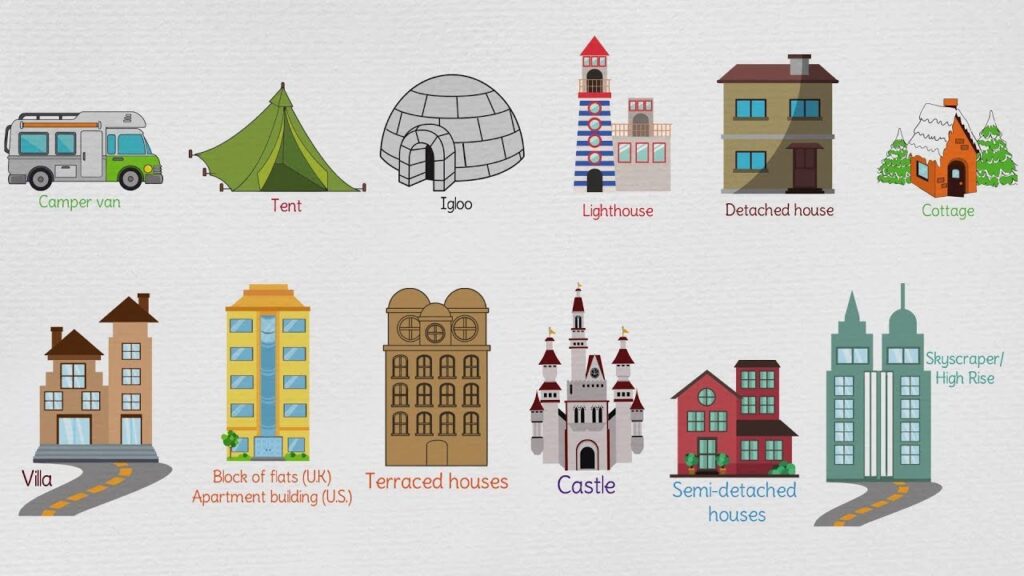
Healthcare Buildings:
Healthcare buildings refer to structures specifically designed and constructed to support and provide healthcare services. These buildings play a crucial role in the healthcare system by offering facilities for medical diagnosis, treatment, research, and administration. Healthcare buildings encompass a wide range of structures, each serving a different purpose within the healthcare sector. Here are some common types of healthcare buildings:
- Hospitals: These are large facilities that provide a wide range of medical services, including emergency care, surgery, maternity care, and various specialized treatments. Hospitals may have different departments, such as radiology, pathology, and intensive care units.
- Clinics: Clinics are smaller healthcare facilities that focus on specific medical services, such as primary care, dental care, or specialized outpatient services. They are often more accessible for routine check-ups and minor medical issues.
- Medical Offices: Individual or group practices of healthcare professionals, such as doctors, dentists, and specialists, operate from medical offices. These spaces can be found in medical office buildings or integrated into larger healthcare complexes.
- Laboratories: Buildings dedicated to medical research and testing, where scientists and researchers work on developing new treatments, drugs, and medical technologies. Laboratories can be part of hospitals, academic institutions, or independent research facilities.
- Rehabilitation Centers: These buildings are designed to provide therapy and rehabilitation services for individuals recovering from surgeries, injuries, or chronic illnesses. They may include physical therapy, occupational therapy, and other rehabilitation services.
- Nursing Homes and Long-Term Care Facilities: These buildings cater to individuals who require extended care and assistance due to age, disability, or chronic medical conditions. They provide residential services along with medical care.
- Pharmacies: Buildings that house retail or hospital-based pharmacies where patients can obtain prescribed medications and other healthcare products.
- Healthcare Administrative Buildings: Facilities dedicated to the administrative functions of healthcare organizations, including management, billing, and coordination of healthcare services.
- Ambulatory Care Centers: Facilities that provide outpatient services and procedures without the need for overnight stays. They can include surgery centers, diagnostic imaging centers, and urgent care clinics.
Transportation Buildings:
“Transportation buildings” typically refer to structures and facilities associated with transportation infrastructure. These buildings play a crucial role in supporting and facilitating the movement of people, goods, and vehicles within a region. Some common types of transportation buildings include:
- Airports: Terminal buildings, control towers, hangars, and other facilities associated with air travel.
- Railway Stations: Buildings that serve as hubs for train transportation, providing facilities for passengers, ticketing, waiting areas, and platform access.
- Bus Terminals/Depots: Facilities where buses are stationed, and passengers can board or disembark. These buildings often include ticketing offices and waiting areas.
- Ports and Harbors: Buildings such as cargo terminals, passenger terminals, and administrative offices associated with maritime transportation.
- Highway Service Centers: Rest areas, service stations, and other buildings along highways that provide amenities and services to travelers.
- Subway/Metro Stations: Underground or elevated structures for accessing and disembarking from subway or metro trains.
- Transportation Hubs: Integrated facilities that connect various modes of transportation, such as airports with bus or train services.
- Logistics Centers: Warehouses and distribution centers that are critical for the efficient movement and storage of goods within transportation networks.
- Customs and Border Facilities: Buildings associated with the inspection and processing of people and goods at international borders.
Hospitality Buildings
Hospitality buildings refer to structures or facilities that provide accommodations, services, and amenities for travelers and guests. These buildings are designed to cater to the needs and comfort of individuals who are away from their homes for various reasons, such as tourism, business, or other activities. Hospitality buildings are a key component of the hospitality industry, which encompasses a wide range of businesses focused on providing lodging, food and beverage services, and other related services.
Key types of hospitality buildings include:
- Hotels and Motels: These are perhaps the most common types of hospitality buildings, providing temporary accommodations for travelers. Hotels vary in size and amenities, ranging from budget motels to luxury resorts.
- Resorts: Resorts are larger establishments that often include additional recreational facilities such as pools, spas, golf courses, and entertainment options. They are designed to offer a comprehensive and luxurious experience for guests.
- Bed and Breakfasts (B&Bs): B&Bs are smaller lodging establishments that typically provide overnight accommodations and breakfast. They are often characterized by a more intimate and personalized experience.
- Hostels: Hostels offer budget-friendly accommodations, especially for travellers, often providing dormitory-style rooms and shared facilities. They are popular among backpackers and budget-conscious travellers.
- Vacation Rentals: This category includes houses, apartments, or other residential properties that are rented out to travellers for short-term stays. Online platforms like Airbnb have popularized this type of accommodation.
- Restaurants and Cafes: While not exclusively accommodations, restaurants and cafes are often part of the hospitality industry. They provide food and beverage services to both guests of the establishment and the general public.
- Conference Centres: Some hospitality buildings are specifically designed to host conferences, meetings, and events. These facilities typically include meeting rooms, conference halls, and related amenities.
- Cruise Ships: While not traditional buildings, cruise ships can be considered floating hospitality establishments. They provide accommodations, dining, and entertainment for passengers during a journey to various destinations.
Agricultural Buildings:
Agricultural buildings are structures designed and constructed for various farming and agricultural purposes. These buildings play a crucial role in supporting and optimizing agricultural activities, providing shelter, storage, and workspace for both crops and livestock. The design and function of agricultural buildings can vary widely depending on the specific needs of the farm and the type of agriculture practiced. Here are some common types of agricultural buildings:
- Barns: These are large, often multi-purpose buildings used for storing hay, grain, and equipment. Barns can also provide shelter for livestock, such as horses, cows, and goats.
- Silos: Silos are tall cylindrical structures used to store and protect grain or silage (fermented feed) for livestock. They come in various forms, including tower silos, bunker silos, and bag silos.
- Greenhouses: Greenhouses are structures with transparent walls and roofs designed to create a controlled environment for growing plants. They are used to extend the growing season, protect crops from adverse weather conditions, and provide an optimal climate for plant growth.
- Poultry Houses: These are specialized buildings designed for raising chickens, ducks, turkeys, and other poultry. Poultry houses provide shelter, nesting areas, and climate control to support the health and productivity of the birds.
- Farm Sheds: These are versatile structures used for a variety of purposes, such as storing equipment, machinery, and tools. Farm sheds can also serve as workshops or maintenance facilities.
- Dairy Buildings: Farms that produce milk often have specific structures for housing and managing dairy cattle. These buildings may include milking parlors, milk storage facilities, and areas for the care of dairy cows.
- Farmhouses: While not directly related to agricultural operations, farmhouses are residential buildings on or near a farm where the farm owner or workers may live.
Utility Buildings:
“Utility buildings” generally refer to structures that serve a practical or functional purpose rather than being primarily designed for residential or recreational use. These buildings are often constructed to house equipment, machinery, or utilities necessary for various purposes. The term can encompass a range of structures depending on the context and industry. Here are a few examples:
- Utility Sheds or Storage Buildings: These are simple structures used for storing tools, equipment, or other items. They are commonly found in residential, commercial, or industrial settings.
- Utility Substations: In the context of electrical infrastructure, utility buildings may house electrical substations. These substations contain equipment for transforming and distributing electrical power.
- Water Treatment Plants: Buildings associated with water treatment facilities are considered utility buildings. They house the necessary equipment for purifying and distributing water for consumption.
- Pump Stations: Utility buildings can also include pump stations that are used to move fluids, such as water or sewage, from one location to another.
- Telecommunication Hubs: Buildings that house telecommunication equipment, servers, and networking infrastructure fall into the category of utility buildings.
- Power Plants: Buildings associated with power generation facilities, whether they are coal, gas, nuclear, or renewable energy plants, are considered utility buildings.
- Waste Treatment Facilities: Buildings that manage the treatment and disposal of waste, such as incineration plants or recycling centers, are also utility structures.
Rescue and Emergency Services Buildings:
Rescue and Emergency Services Buildings are facilities specifically designed and equipped to support and house emergency response and rescue operations. These buildings play a crucial role in ensuring the effective and efficient response to various emergencies, including natural disasters, accidents, fires, medical emergencies, and other critical incidents.
Key features of Rescue and Emergency Services Buildings may include:
- Command and Control Centers: These facilities often house command and control centers where emergency response personnel coordinate operations, communicate with various agencies, and make strategic decisions during emergencies.
- Communication Infrastructure: Advanced communication systems are essential for coordinating emergency response efforts. These buildings are equipped with state-of-the-art communication technologies to facilitate efficient communication among emergency personnel.
- Training Facilities: Rescue and emergency services buildings may include training areas for emergency responders to practice and enhance their skills. This can include simulation rooms, mock disaster scenarios, and other training resources.
- Equipment Storage: These buildings are designed to store and maintain emergency response equipment, such as firefighting gear, medical supplies, search and rescue tools, and other specialized equipment needed during emergencies.
- Garage or Bay Area: To house emergency vehicles such as fire trucks, ambulances, and other specialized rescue vehicles.
- Living Quarters: In some cases, these buildings may include living quarters or dormitories for emergency responders who may need to stay on-site during extended emergency situations.
- Security Measures: Given the critical nature of the work conducted in these buildings, security measures are often in place to protect both the facility and its occupants.
- Meeting Rooms and Briefing Areas: Spaces for briefings, debriefings, and meetings are typically included to facilitate communication and coordination among emergency response teams.
Financial Buildings:
These buildings house and facilitate the operations of key financial entities and institutions. Here’s a brief explanation of each:
Banks:
- Banks are financial institutions that provide a range of financial services, including deposit accounts, loans, and investment services.
- Financial buildings for banks serve as branches or headquarters where customers can conduct transactions, seek financial advice, and access various banking services.
Financial Institutions:
- Financial institutions encompass a broad range of organizations, including credit unions, insurance companies, and investment firms.
- Buildings for financial institutions serve as operational hubs where professionals manage financial portfolios, process transactions, and offer financial products and services.
Stock Exchanges:
- Stock exchanges are centralized markets where buyers and sellers trade financial instruments such as stocks, bonds, and commodities.
- The buildings housing stock exchanges serve as trading floors or electronic trading platforms where financial instruments are bought and sold, contributing to price discovery and market liquidity.
Environmental and Sustainable Buildings:
Environmental and sustainable buildings refer to structures designed and constructed with a focus on minimizing their negative impact on the environment while promoting long-term ecological balance and resource efficiency. The principles of environmental and sustainable building take into account various factors, including energy efficiency, water conservation, waste reduction, and the use of environmentally friendly materials.
Key features and considerations in environmental and sustainable buildings include:
- Energy Efficiency: Designing and constructing buildings to minimize energy consumption through features such as efficient insulation, energy-efficient lighting, and advanced HVAC (heating, ventilation, and air conditioning) systems. The goal is to reduce the demand for non-renewable energy sources and lower greenhouse gas emissions.
- Renewable Energy Sources: Incorporating renewable energy technologies such as solar panels, wind turbines, or geothermal systems to generate on-site or decentralized energy, reducing reliance on fossil fuels.
- Water Conservation: Implementing water-efficient technologies and practices, including low-flow fixtures, rainwater harvesting systems, and efficient irrigation methods, to reduce water consumption and promote water sustainability.
- Materials Selection: Choosing sustainable and eco-friendly materials with low environmental impact, considering factors such as resource extraction, manufacturing processes, and recyclability. This may involve the use of recycled materials, rapidly renewable resources, and locally sourced materials to reduce transportation-related emissions.
- Waste Reduction and Recycling: Incorporating strategies to minimize construction and operational waste, promoting recycling and reuse of materials, and adopting a life-cycle approach to building design and management.
- Indoor Environmental Quality: Prioritizing indoor air quality through proper ventilation, use of non-toxic materials, and attention to thermal comfort and lighting to create a healthy and comfortable living or working environment.
- Site Planning and Landscape Design: Implementing sustainable site planning practices, including preserving natural habitats, minimizing the impact on local ecosystems, and promoting biodiversity. Sustainable landscaping practices can also contribute to water conservation and the overall environmental performance of a building.
- Adaptability and Resilience: Designing buildings with flexibility and adaptability to accommodate future changes in use or technological advancements. Additionally, considering resilience to climate change impacts and extreme weather events to enhance the building’s durability and longevity.
- Certifications and Standards: Many environmental and sustainable buildings adhere to recognized certifications and standards, such as LEED (Leadership in Energy and Environmental Design), BREEAM (Building Research Establishment Environmental Assessment Method), or other regional equivalents. These certifications provide a framework for evaluating and measuring the sustainability performance of buildings.
Historical and Architectural Landmarks Buildings:
Historical and architectural landmarks are buildings or structures that hold significant historical, cultural, or architectural importance. These landmarks often serve as tangible representations of a region’s heritage, achievements, and identity. They may be recognized and protected by local, national, or international authorities to preserve their cultural and historical value.
Here are some key characteristics of historical and architectural landmarks:
- Historical Significance: Landmarks are often associated with important events, people, or periods in history. They may be remnants of ancient civilizations, witness to significant battles, or locations where important political or cultural events occurred.
- Architectural Significance: Landmarks are notable for their architectural design, innovation, or artistic value. They may showcase particular architectural styles, construction techniques, or craftsmanship that set them apart.
- Cultural Importance: Many landmarks play a vital role in the cultural identity of a community or nation. They may be symbols of national pride, cultural diversity, or religious significance.
- Tourist Attractions: Landmarks often attract tourists and visitors due to their historical or architectural appeal. They contribute to the tourism industry by drawing people who are interested in exploring and learning about the past.
- Preservation: Governments and organizations may take steps to preserve and protect historical and architectural landmarks to ensure their longevity. This can involve restoration efforts, maintenance, and implementing policies to prevent damage or alteration.
Examples of historical and architectural landmarks include:
- The Eiffel Tower in Paris, France.
- The Great Wall of China.
- The Taj Mahal in Agra, India.
- The Colosseum in Rome, Italy.
- The Pyramids of Giza in Egypt.
- The Statue of Liberty in New York, USA.
Preserving and appreciating these landmarks helps to connect present and future generations with their cultural and historical roots. They contribute to a sense of identity and continuity, reminding us of the achievements, struggles, and cultural diversity that shape our world.
Conclusion:
The classification of buildings is essential for understanding the diverse functions they serve in our communities. This detailed classification encompasses a wide range of structures, each tailored to meet specific needs and purposes. From the towering skyscrapers that define city skylines to the humble homes that form the fabric of neighborhoods, the world of buildings is a reflection of human creativity, functionality, and adaptability. As architecture continues to evolve, so too will the ways in which we classify and conceptualize the structures that shape our environment.

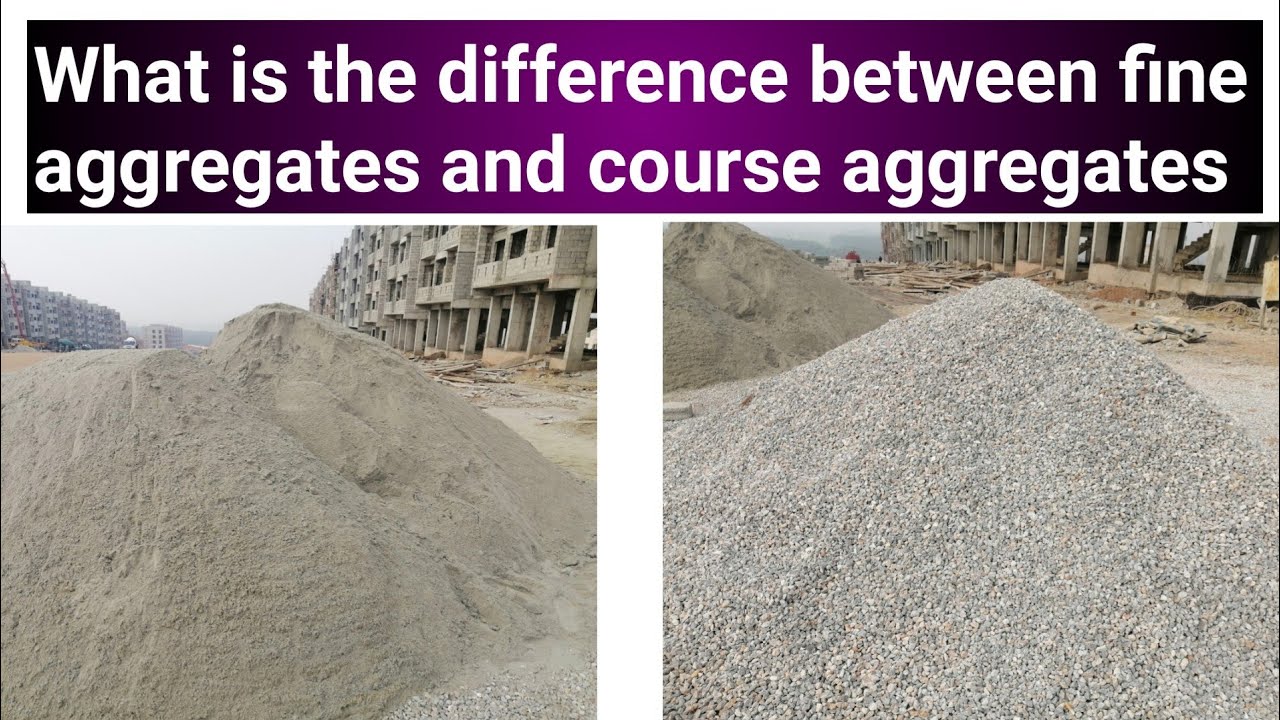
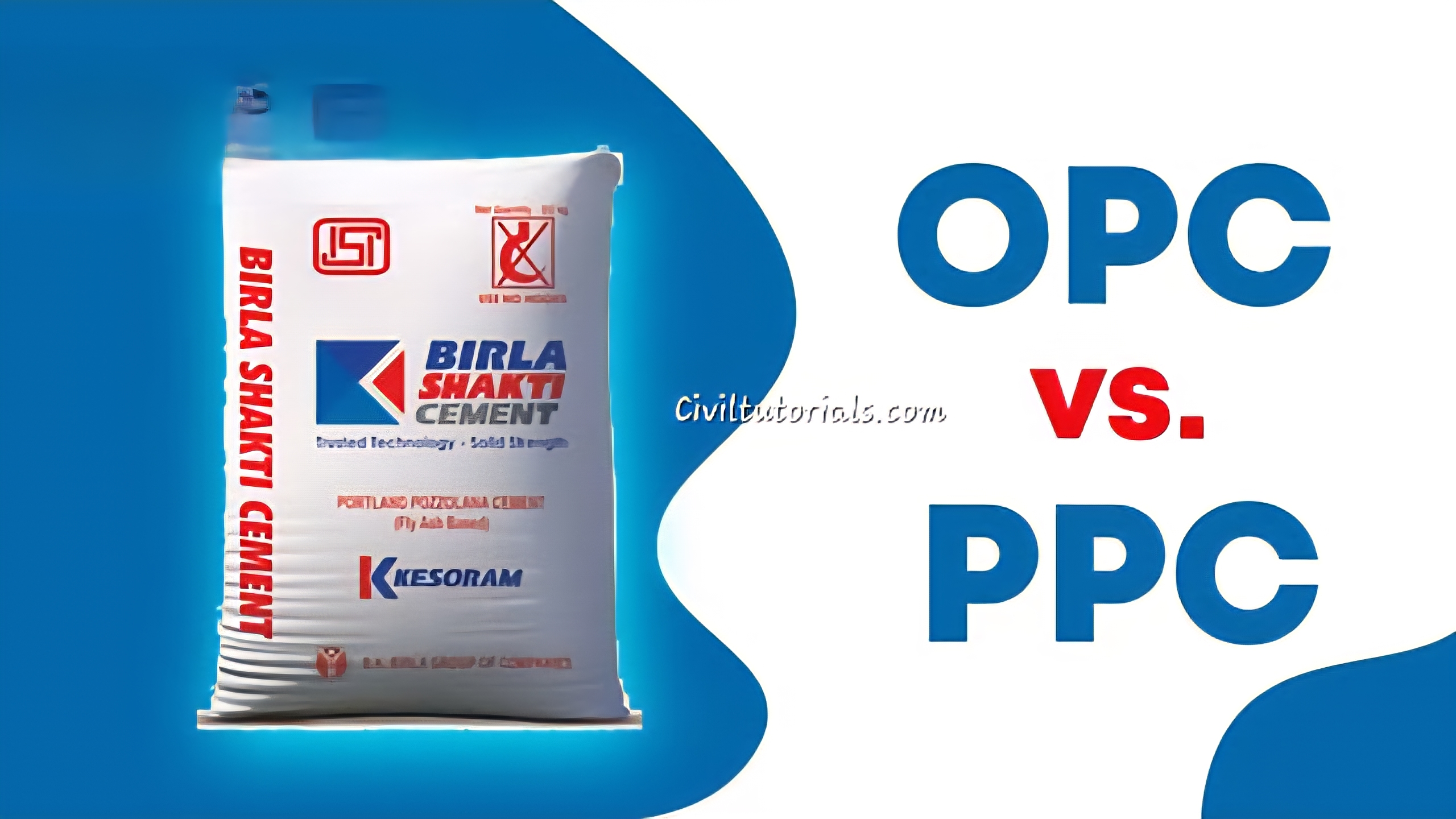
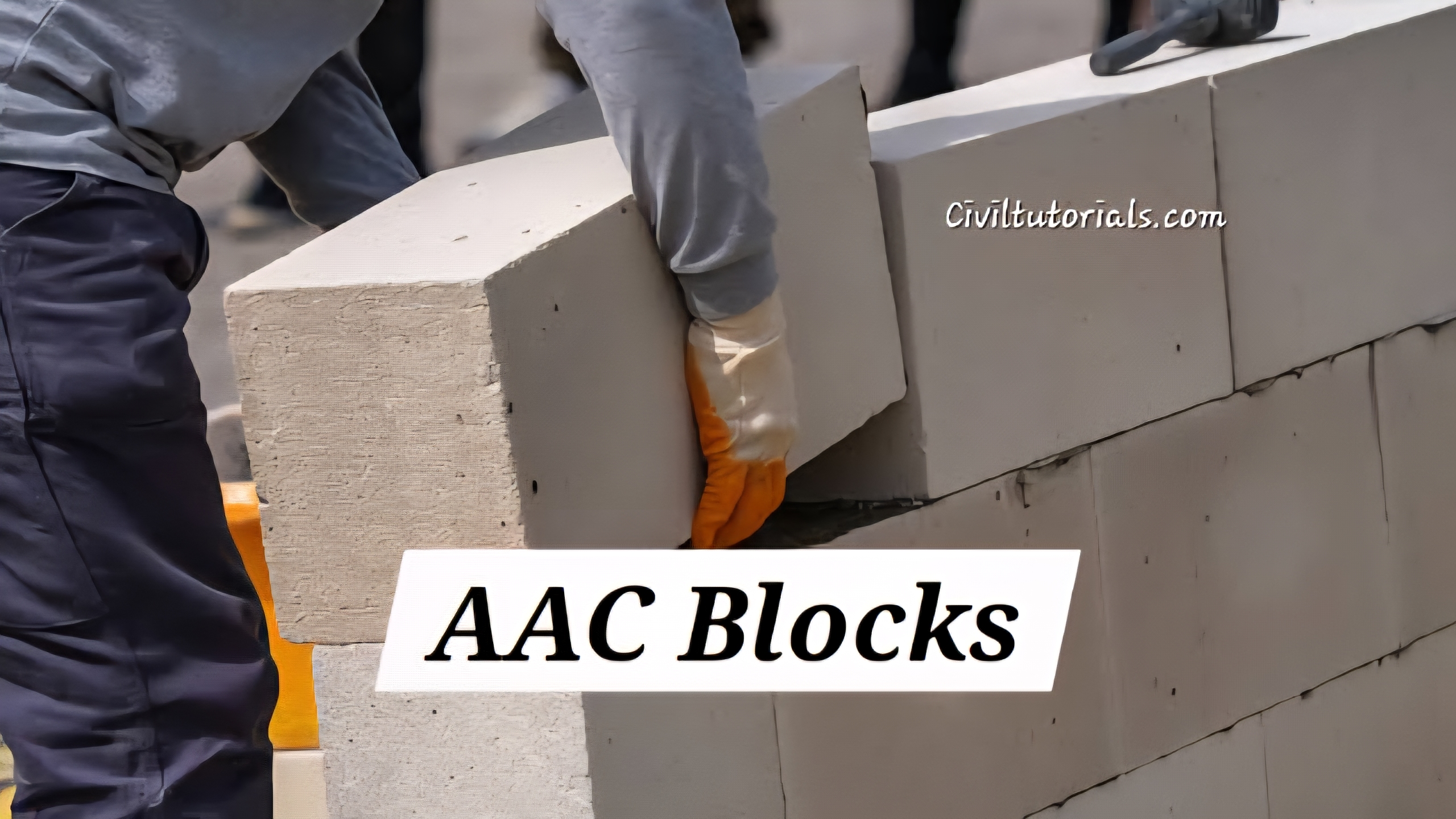


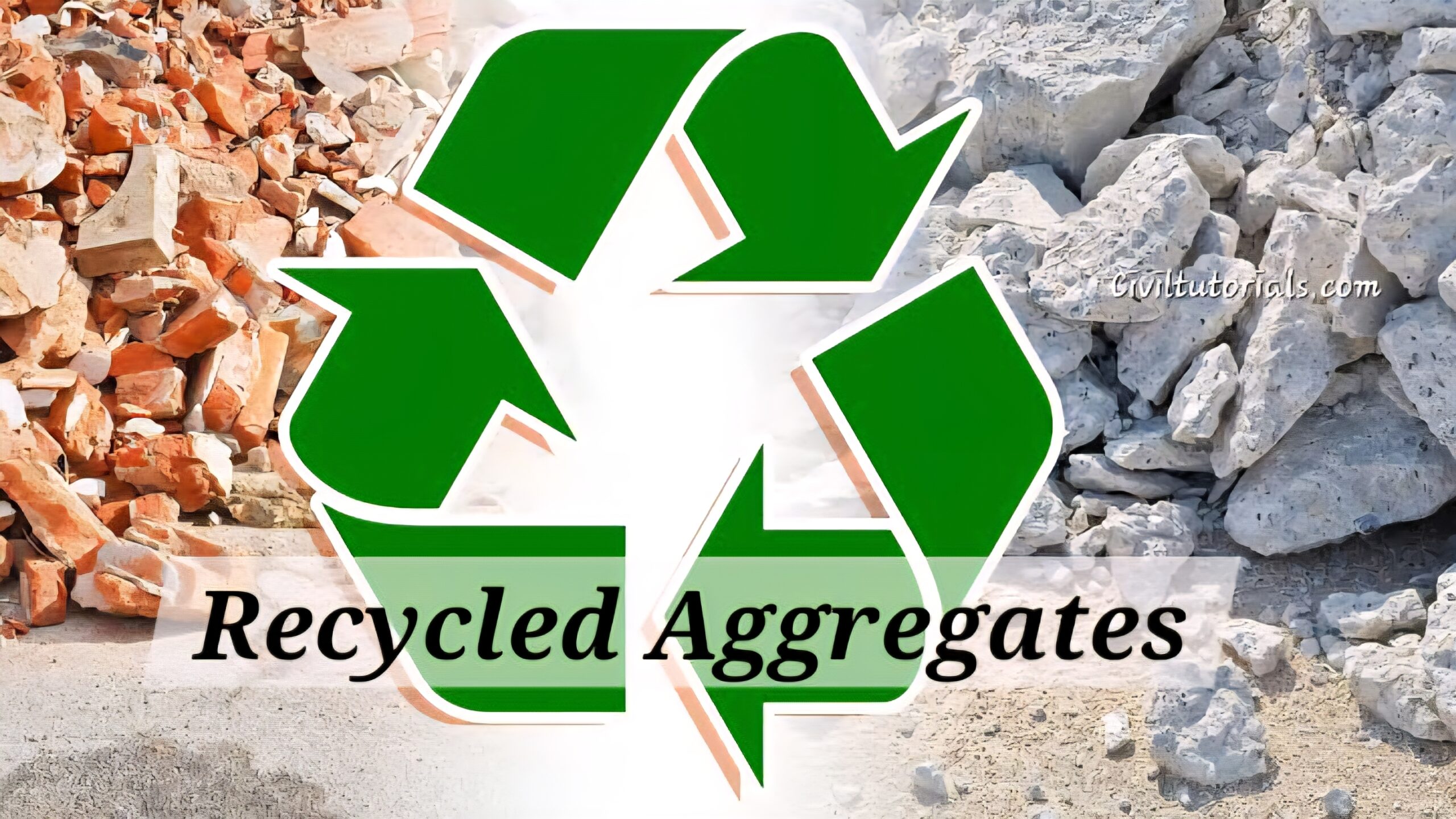


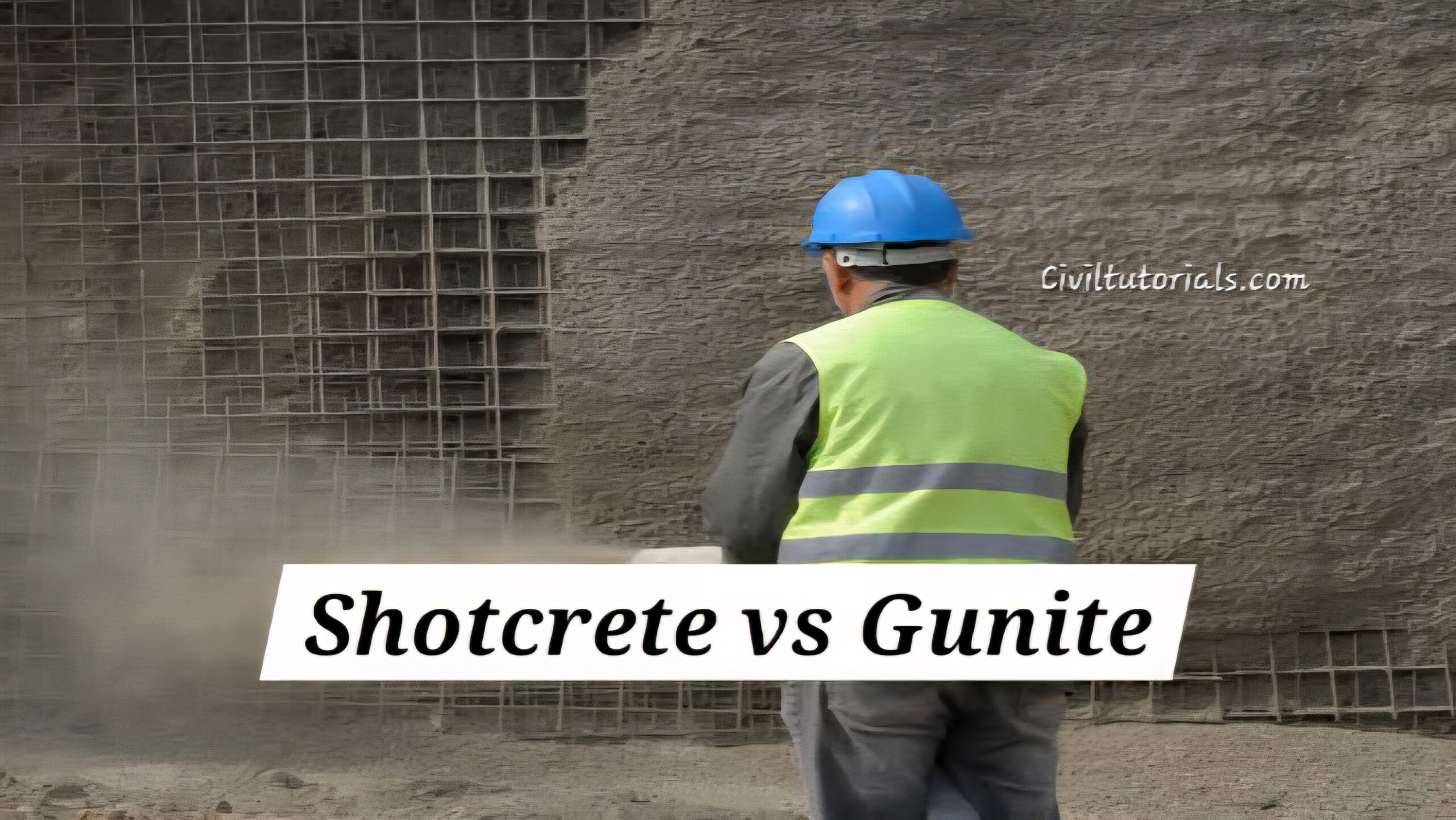
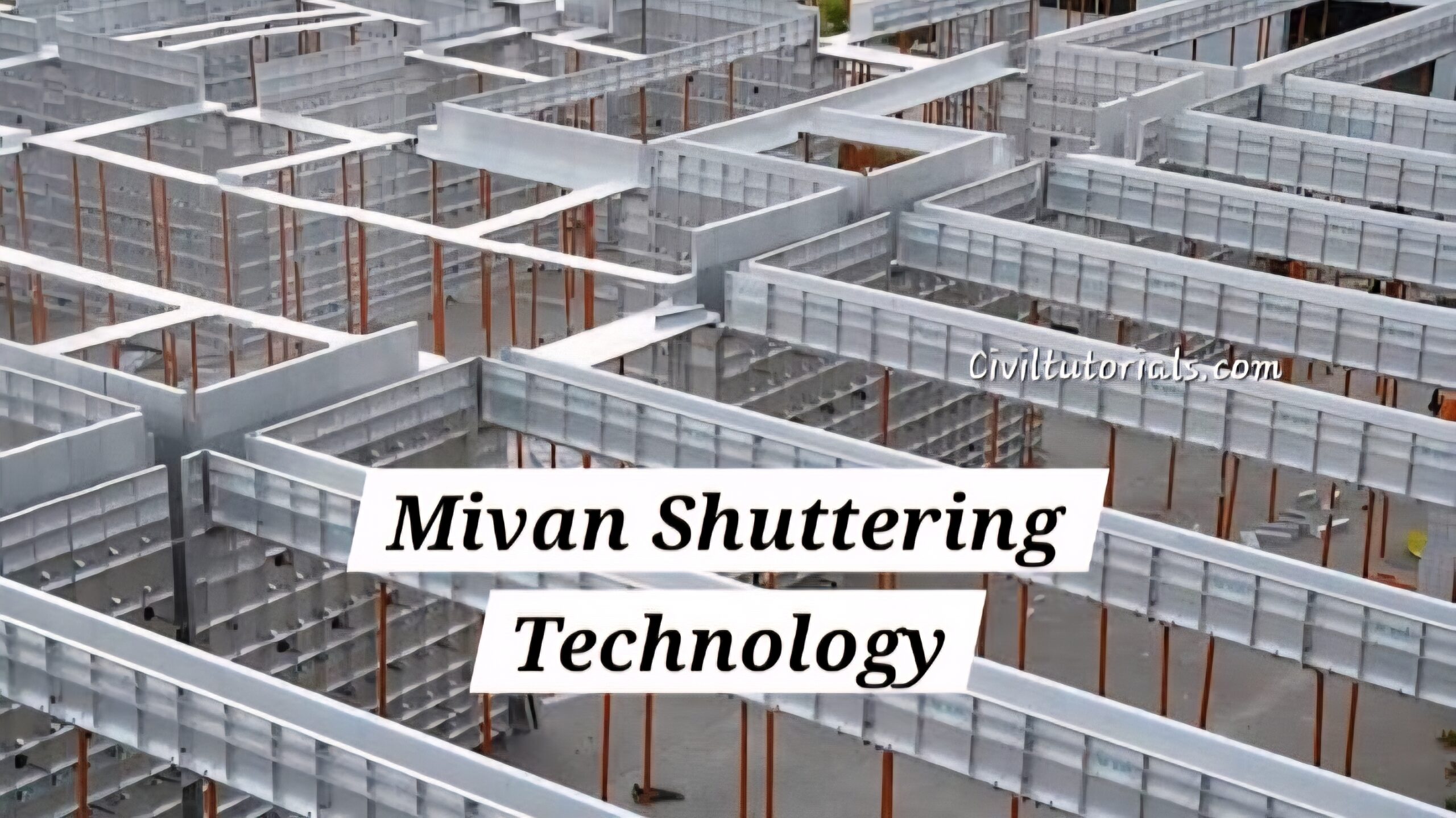

13 thoughts on “How Many Types of Buildings: Detailed Classification Of Buildings”